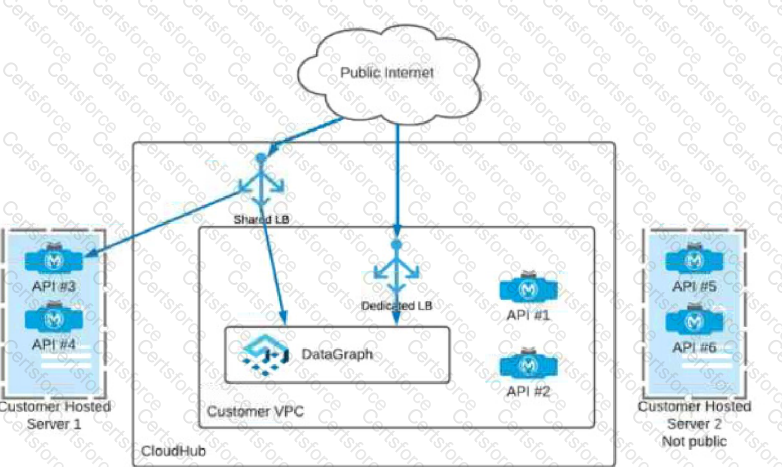Which three tools automate the deployment of Mule applications?
Choose 3 answers
What is typically NOT a function of the APIs created within the framework called API-led connectivity?
A Mule application implements an API. The Mule application has an HTTP Listener whose connector configuration sets the HTTPS protocol and hard-codes the port
value. The Mule application is deployed to an Anypoint VPC and uses the CloudHub 1.0 Shared Load Balancer (SLB) for all incoming traffic.
Which port number must be assigned to the HTTP Listener's connector configuration so that the Mule application properly receives HTTPS API invocations routed through the
SLB?
Which APIs can be used with DataGraph to create a unified schema?

A customer wants to monitor and gain insights about the number of requests coming in a given time period as well as to measure key performance indicators
(response times, CPU utilization, number of active APIs).
Which tool provides these data insights?
An auto manufacturer has a mature CI/CD practice and wants to automate packaging and deployment of any Mule applications to various deployment targets, including CloudHub workers/replicas, customer-hosted Mule runtimes, and Anypoint Runtime Fabric.
Which MuleSoft-provided tool or component facilitates automating the packaging and deployment of Mule applications to various deployment targets as part of the company's
CI/CD practice?
An organization has several APIs that accept JSON data over HTTP POST. The APIs are all publicly available and are associated with several mobile applications and web applications.
The organization does NOT want to use any authentication or compliance policies for these APIs, but at the same time, is worried that some bad actor could send payloads that could somehow compromise the applications or servers running the API implementations.
What out-of-the-box Anypoint Platform policy can address exposure to this threat?
A company has started to create an application network and is now planning to implement a Center for Enablement (C4E) organizational model. What key factor would lead the company to decide upon a federated rather than a centralized C4E?
A developer from the Central IT team has created an initial version of the RAML definition in Design Center for an OAuth 2.0-protected System API and published it
to Exchange. Another developer from LoB IT discovered the System API in Exchange and would like to leverage it in the Process API.
What is the MuleSoft-recommended approach for Process API to invoke the System API?
What is a best practice when building System APIs?